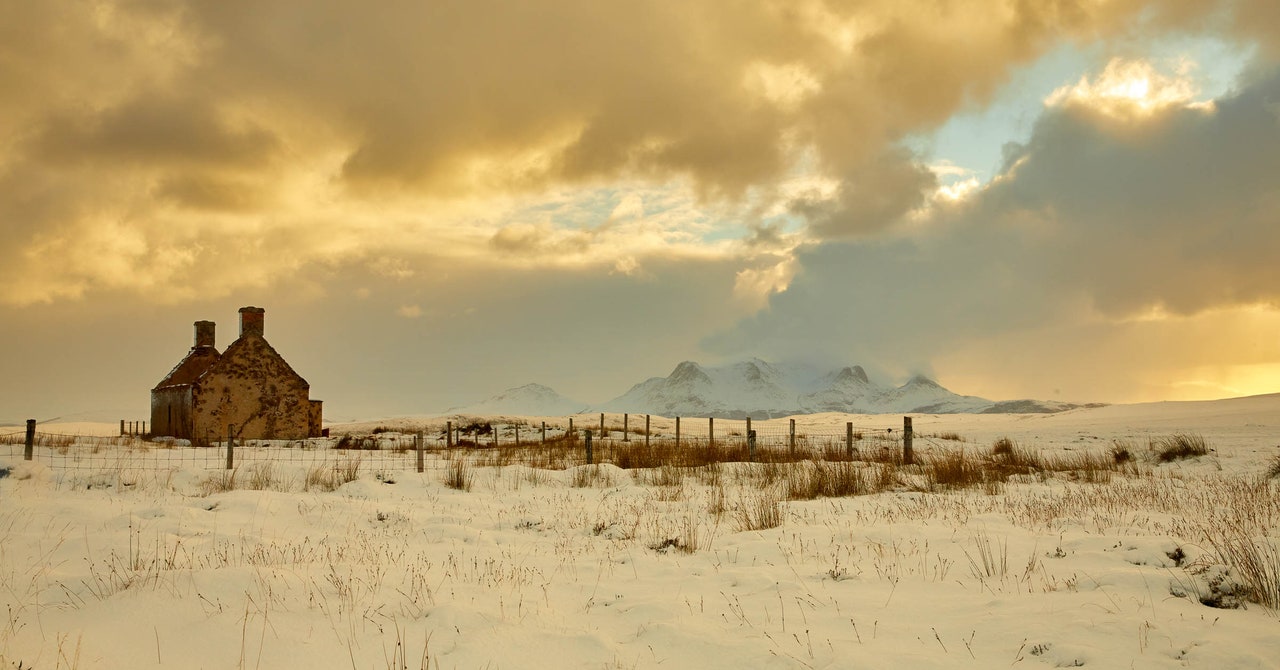
What about human safety? Gordon McEwan, whose home is near the proposed launch site, is anxious about falling rockets. In a meeting with Orbex and other crofters, he shared his concern that the launch exclusion zone was too small. When the rocket lifts off, the zone will have a radius of less than 2 kilometers. Orbex’s response was to trust the regulators. “You can’t randomly launch things of this nature,” Chris Larmour, the CEO of Orbex, told me. “We are a heavily regulated industry.” A Highland newspaper reported, though, that at a space industry event in 2021 he’d admitted he wouldn’t want one in his backyard either.
According to Orbex and the development board, the economic benefits will outweigh these risks. They expect the spaceport to create around 40 jobs—from security and engineering to marketing roles—in an area with a population of several hundred. Some workers, they think, will commute from bigger towns on the north coast, but others may settle in the Melness area, boosting the school rolls. A report commissioned by the development board predicted that during the first two years of its operation, the spaceport would add several million dollars worth of gross value to Melness and Tongue’s economy, and attract thousands of visitors—a big boost for tourism.
Spaceports, though, are rarely a solution to the problems faced by marginalized areas, and they have a history of leaving local communities in the dust. They require sparsely populated land, usually near the equator, to profit from the higher speed of the earth’s rotation at equatorial latitudes, or in the far north or south, for easy access to polar orbits. They tend to be situated, then, in places like the Highlands—places that have long been considered peripheral and where the land carries fraught histories of marginalization, oppression, and colonization.
Yet to the crofters, the spaceport has come to represent their independence. Melness will need some development if it is to survive. Faced with a choice between another landowning capitalist and a spaceport, the crofters tend to side with the spaceport.
Despite their disagreements with Povlsen, many residents I spoke to felt profound sympathy for him when, on Easter Sunday 2019, he and his family were among the victims of a bomb attack at the Shangri-La Hotel in Sri Lanka. Three of Povlsen’s four children were killed. The church in Tongue held a special service, and the townspeople came out to grieve.
In August 2019, Pritchard and the crofters reached an agreement with the development board: 12 launches per year, for £70,000 (about $85,000) a year in base rent. Objections started to flow in. The Royal Society for the Protection of Birds came out against the project, as did 1,075 signatories of a petition against the spaceport. Povlsen also voiced his disapproval. His 62-page report argued that the spaceport could disrupt breeding bird seasons and damage everything from water quality to the look of the land. It said that another proposed spaceport was in a better location, that the spaceport would harm the peatlands, that the economic benefits had been overstated. Ultimately, the Highland Council’s planning committee granted permission for the spaceport in a unanimous decision—but Pritchard did not celebrate. She may have sensed the fight against Povlsen was just beginning.
Povlsen swiftly filed a lawsuit, asking the Scottish Court of Session to cancel permission, and paid the legal fees of three crofters in another legal challenge. “Are we to have no developments along the North Coast unless they have the permission of Mr. Povlsen?” Pritchard wrote on a Facebook page. “To take that sort of opportunity away from our young people is unforgivable.”
Then, in November 2020, Povlsen invested £1.43 million in a competing spaceport project in the Shetland Islands. That site is not surrounded by peat bog, but the crofters were outraged. “If it’s really an environmental issue,” Pritchard said, “why did he go and build a much bigger spaceport with three launch pads and bigger rockets?”


